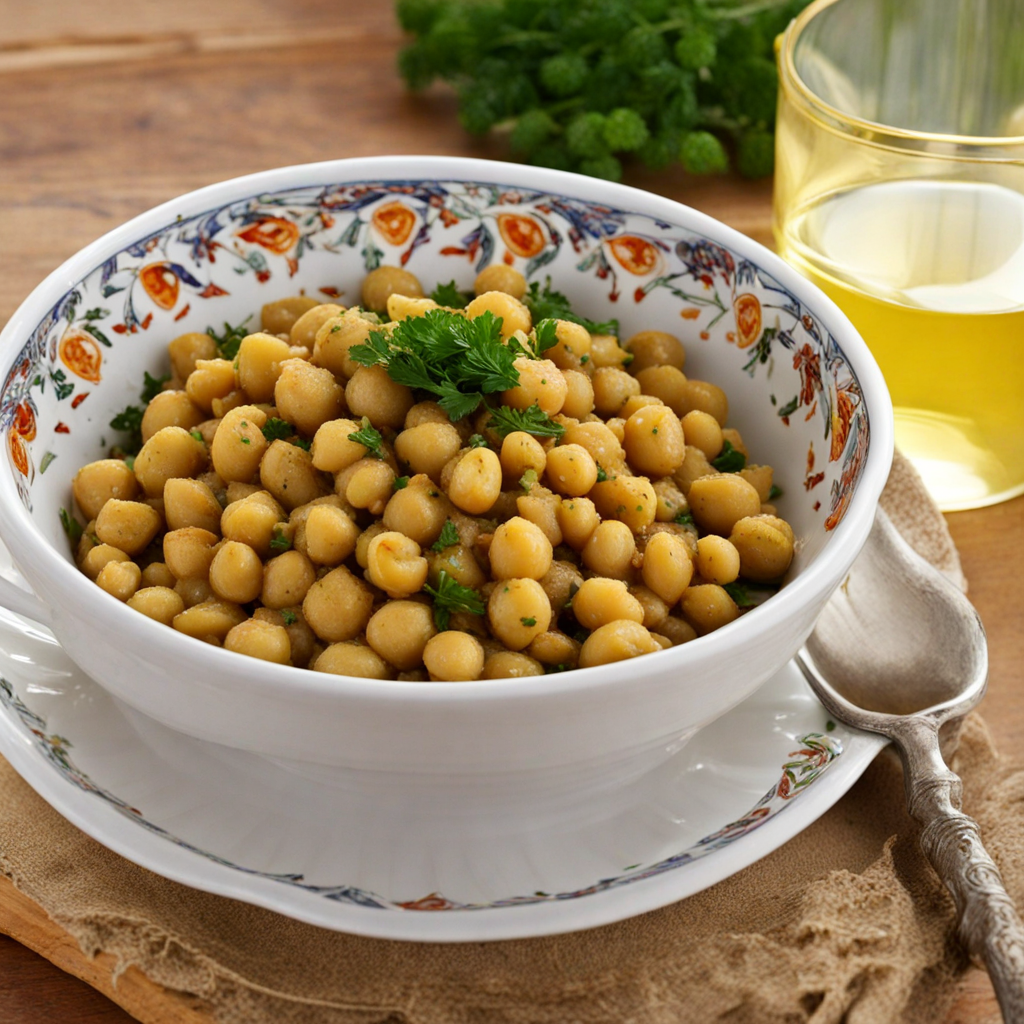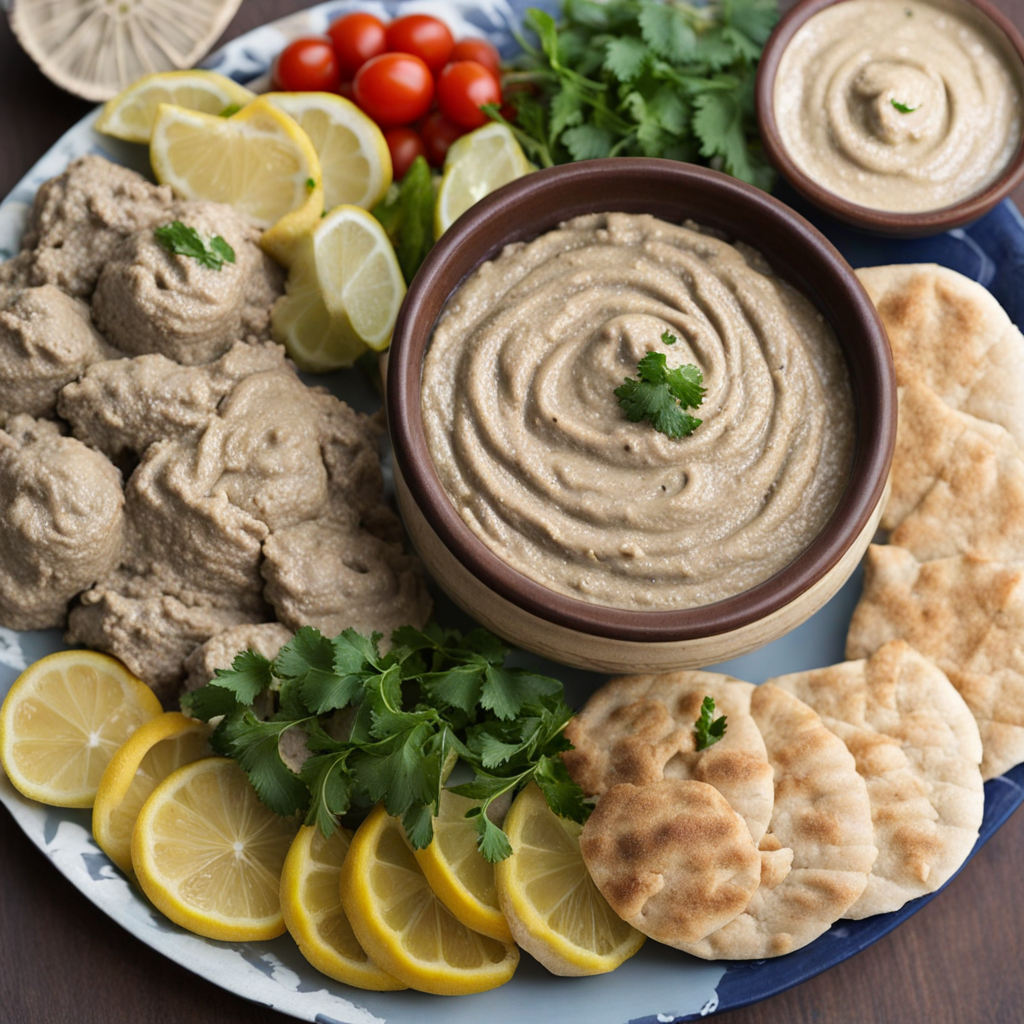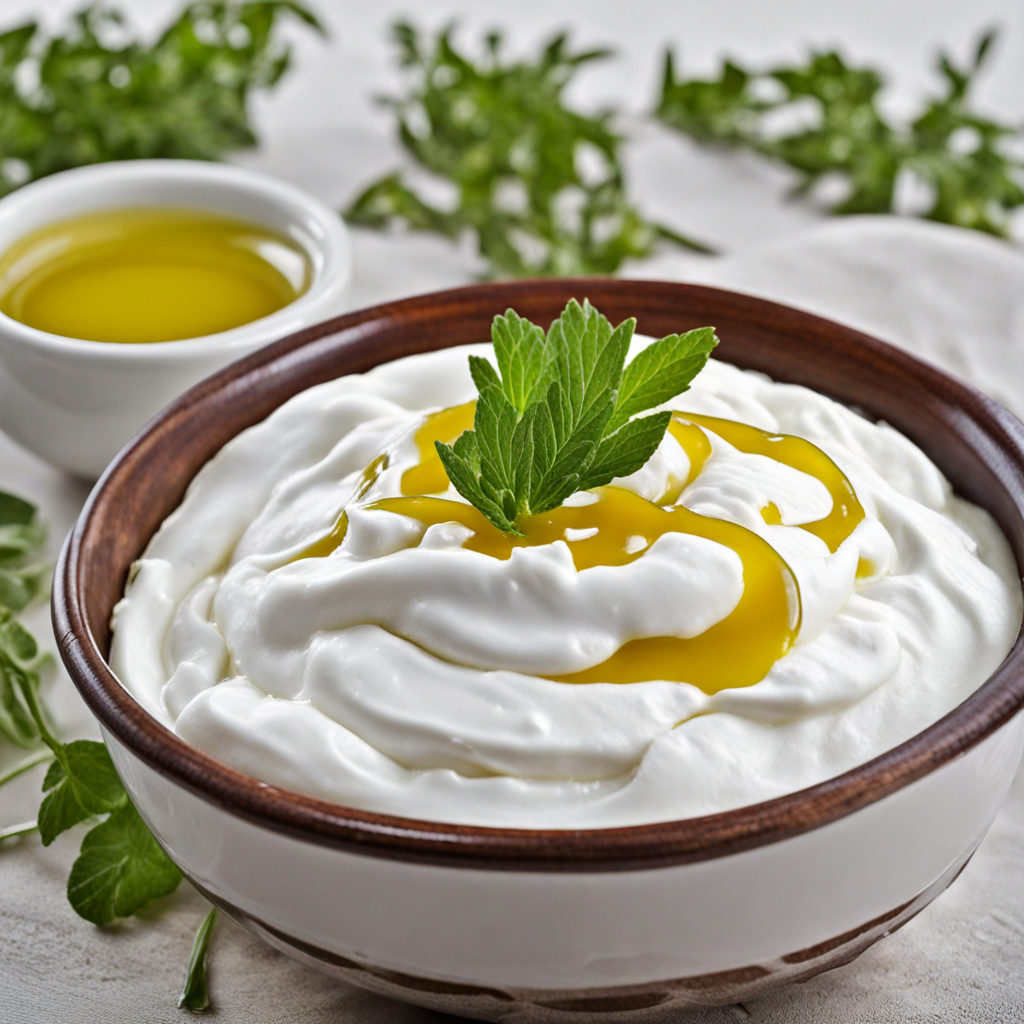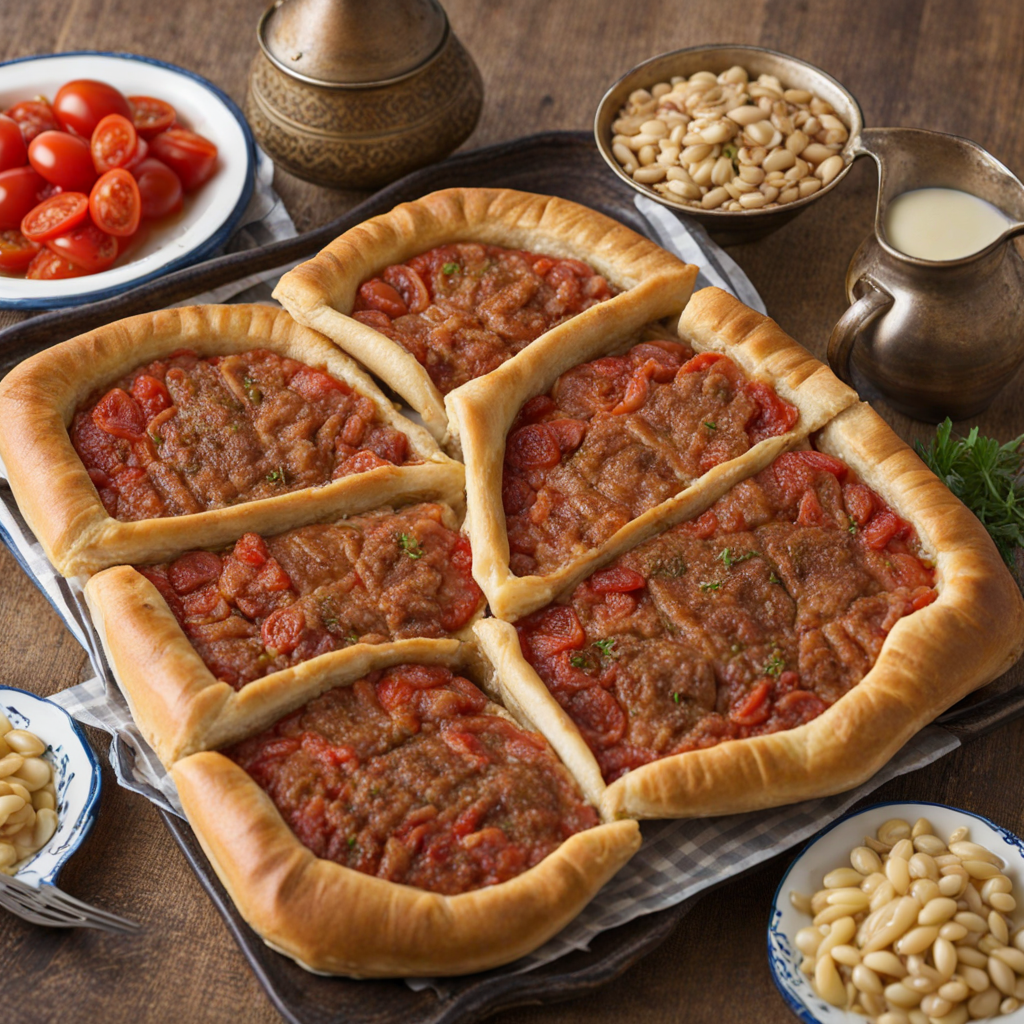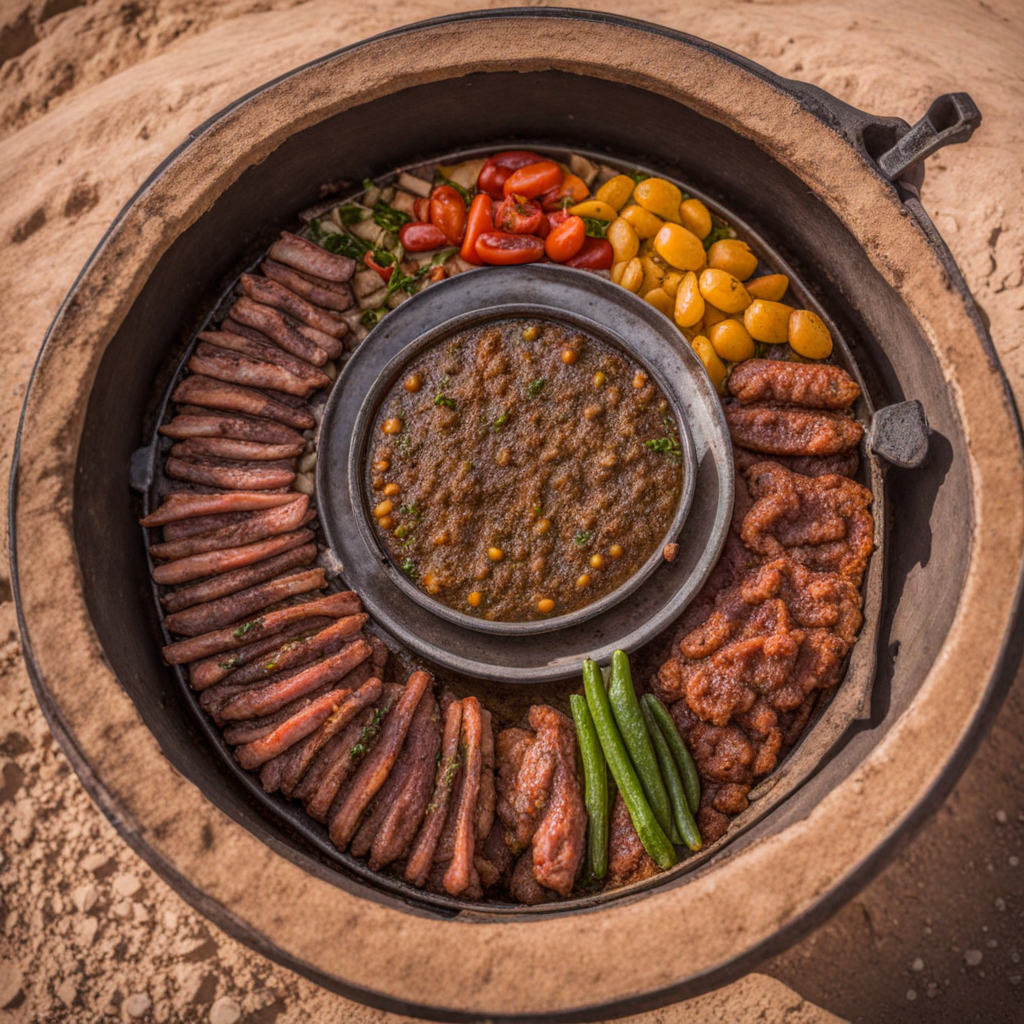Balila
Balila is a delightful and comforting dish hailing from the Middle Eastern country of Jordan. At its core, it consists of boiled chickpeas, which are known for their creamy texture and nutty flavor. The chickpeas are typically seasoned with a simple yet aromatic blend of spices, including cumin and garlic, creating an inviting aroma that beckons food lovers to take a bite. The warmth of the spices complements the chickpeas beautifully, making each mouthful a satisfying experience that warms the soul. Often served warm or at room temperature, Balila is usually drizzled with a generous amount of tahini sauce, which adds a rich and nutty depth to the dish. The creamy tahini, made from ground sesame seeds, enhances the overall flavor profile and provides a velvety texture that pairs wonderfully with the chickpeas. A sprinkle of fresh parsley or cilantro on top adds a burst of color and a hint of freshness, making it visually appealing as well as delicious. Balila is commonly enjoyed as a hearty breakfast or a light snack, and it can be accompanied by pita bread for a satisfying meal. Its versatility allows it to be customized with various toppings such as lemon juice, olive oil, or even a dash of paprika for an extra kick. This delightful dish not only showcases the rich culinary traditions of Jordan but also invites those eager to explore new flavors to indulge in a plate of warmth, comfort, and a taste of the Middle East.
How It Became This Dish
Origin of بليلة بليلة, a traditional Jordanian dish, has its roots deeply embedded in the Levantine culinary landscape. It is made primarily from boiled wheat grains and is often enjoyed as a comforting snack or breakfast item. The word 'بليلة' itself derives from the Arabic word for 'night', hinting at its historical consumption during nighttime or early morning gatherings. This dish is believed to have originated in ancient agricultural societies, where wheat was a staple crop. The process of boiling wheat dates back thousands of years, intertwined with the agricultural practices of the Fertile Crescent, which includes modern-day Jordan, Syria, Lebanon, and Palestine. The preparation of بليلة is simple yet significant, involving soaking and cooking the wheat until it achieves a tender consistency. Traditionally, the dish is served warm and garnished with various toppings, including sugar, cinnamon, nuts, and sometimes a drizzle of olive oil. Such toppings not only enhance the flavor but also reflect the regional abundance of ingredients, showcasing the agricultural richness of the area. \n\n Cultural Significance In Jordanian culture, بليلة holds a special place in communal and family gatherings. It is common to see families preparing this dish during the winter months or on festive occasions, where it serves as a symbol of hospitality and warmth. The dish is often associated with the holy month of Ramadan, where it is enjoyed as a pre-dawn meal (Suhoor) to provide sustenance for the day of fasting ahead. Its nutritional value, primarily derived from whole grains, makes it an ideal choice for sustaining energy levels. Moreover, بليلة is not just a dish but a cultural experience. It often accompanies social interactions, whether during family gatherings or community events. Sharing a bowl of بليلة fosters a sense of togetherness and belonging, allowing individuals to connect over food, stories, and traditions. This communal aspect highlights the importance of food in Jordanian society, where meals are often seen as opportunities for bonding and celebration. \n\n Development Over Time As with many traditional dishes, بليلة has evolved over time, adapting to the changing tastes and lifestyles of Jordanian society. In the past, its preparation was a labor-intensive process, often taking hours to soak and boil the wheat. However, with the advent of modern cooking methods and conveniences, the preparation of بليلة has become quicker and more accessible. Today, many households utilize pressure cookers or instant pots to expedite the cooking process, allowing for the enjoyment of this beloved dish without the lengthy preparation time. The accompanying toppings and variations of بليلة have also diversified. While the traditional recipe calls for simple toppings like sugar and nuts, contemporary interpretations may include yogurt, fruits, or even innovative flavors inspired by global culinary trends. This evolution reflects the dynamic nature of Jordanian cuisine, which integrates both traditional elements and modern influences, appealing to younger generations while preserving cultural heritage. \n\n Regional Variations While بليلة is particularly popular in Jordan, variations of the dish can be found throughout the Levant and beyond. In Palestine, for instance, it is often prepared similarly but may feature different spices or accompaniments, reflecting local agricultural practices and preferences. In Lebanon, the dish might be served with a more elaborate presentation, including additional nuts and aromatic herbs. These regional differences highlight the interconnectedness of Levantine cuisines, where dishes share common roots yet are adapted to local tastes and ingredients. Furthermore, بليلة has gained recognition beyond its traditional borders, with diaspora communities bringing this dish to new locations. As Jordanian and Levantine communities have settled around the world, they have introduced بليلة to diverse audiences, often adapting the dish to incorporate locally available ingredients. This globalization of food has allowed for the evolution of بليلة into an international comfort food, enjoyed by people from various cultural backgrounds. \n\n Modern-Day Popularity In modern Jordan, بليلة continues to be a beloved dish, frequently featured in local markets and food stalls. Street vendors often sell it as a quick and nutritious snack, catering to busy urban lifestyles. Additionally, it has found its way into restaurants that celebrate traditional Jordanian cuisine, where chefs experiment with flavors and presentations to appeal to both locals and tourists. Social media has also played a role in the resurgence of interest in بليلة, with food bloggers and influencers sharing recipes, cooking tips, and innovative variations. This digital exposure has not only revitalized interest in traditional foods but has also fostered a sense of culinary pride among Jordanians, encouraging younger generations to embrace and celebrate their culinary heritage. \n\n Conclusion In summary, بليلة is more than just a dish; it is a reflection of Jordan’s agricultural history, cultural values, and communal spirit. Its evolution over time mirrors the adaptability of Jordanian cuisine, embracing both tradition and modernity. As it continues to be enjoyed in homes, markets, and restaurants, بليلة remains a cherished symbol of Jordanian identity, inviting people to gather, share, and savor the flavors of their rich heritage.
You may like
Discover local flavors from Jordan



